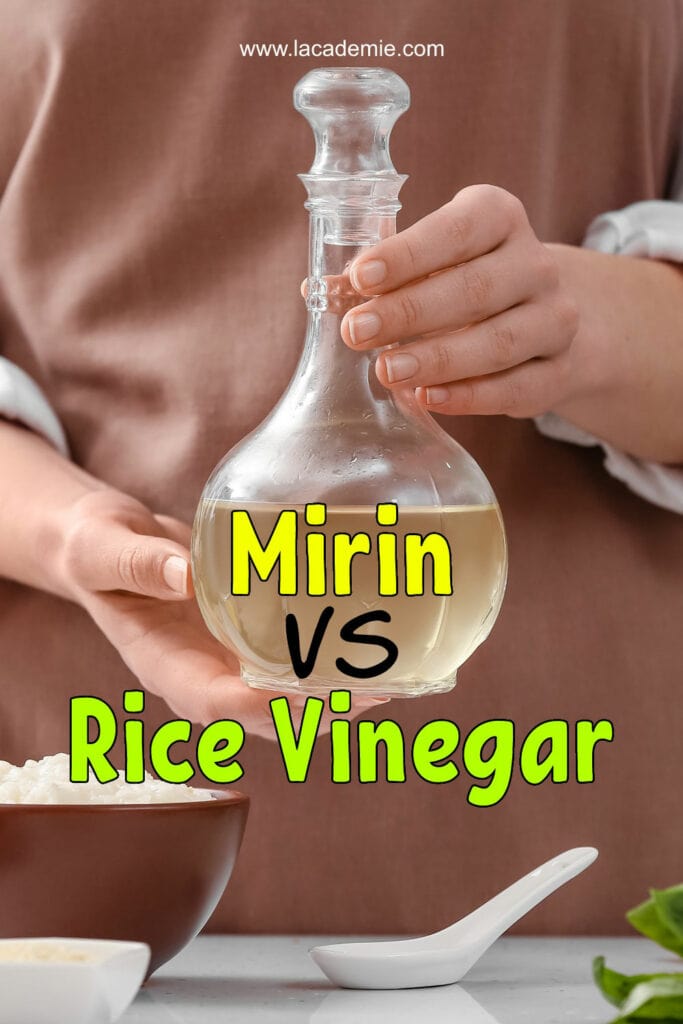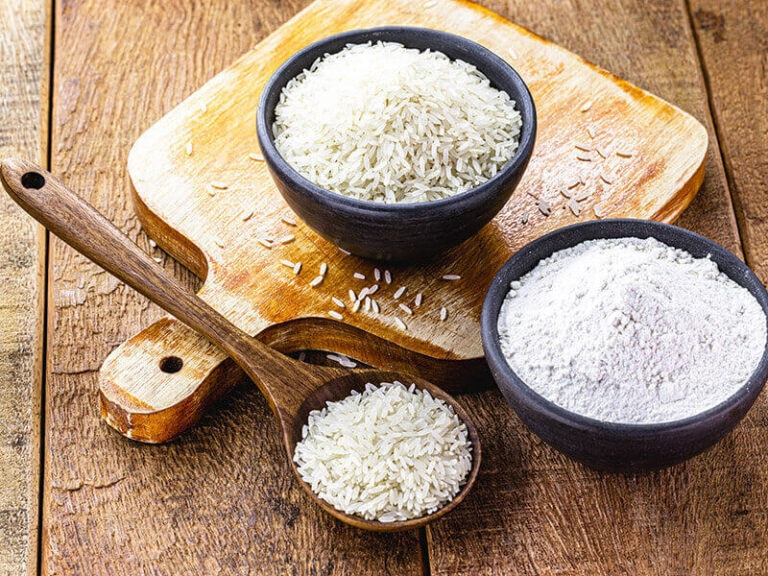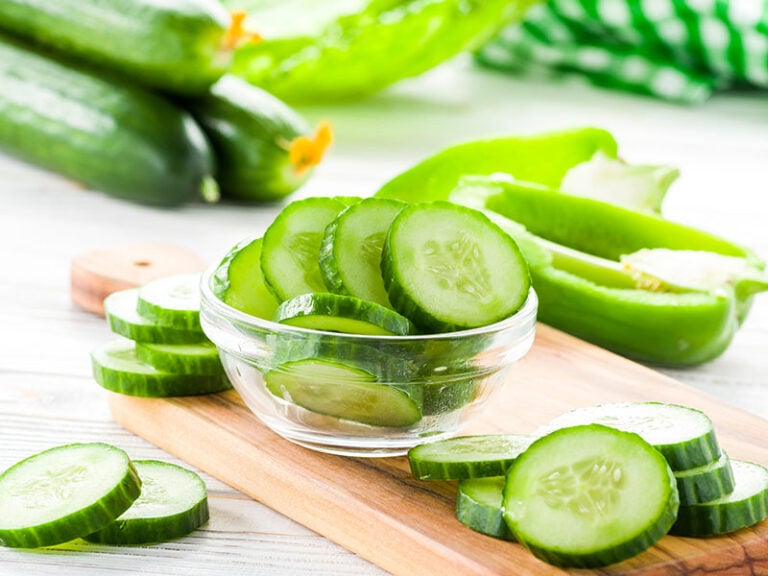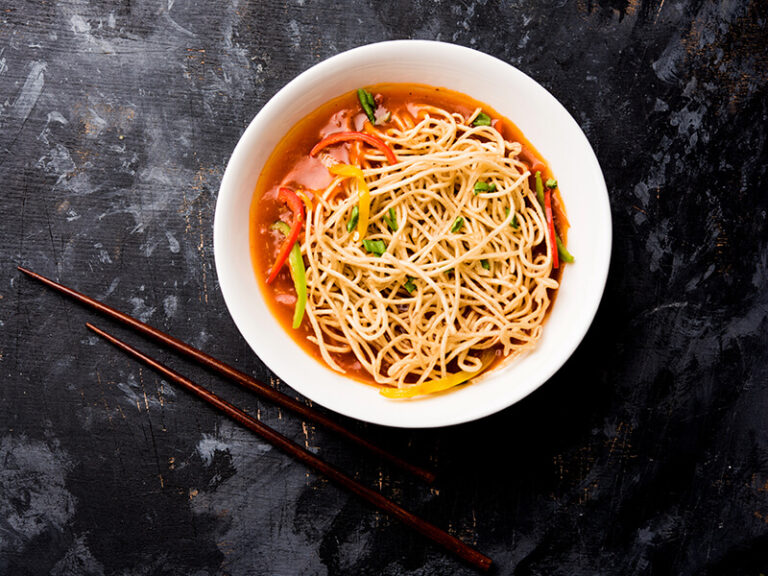“Mirin vs. rice vinegar” is one of the questions commonly asked on the Internet when it comes to Asian spices. They are both fermented condiments using rice – the main beloved staple food appearing in everyday meals of every Asian.
You might think about the interchangeable possibilities of mirin and rice vinegar in your recipes? No! Excluding some urgent cases, most of the time, they are completely different in nature.
In this article, I would like to show you the similarities and differences between mirin and rice vinegar in detail. Read further to pick precisely what you need!
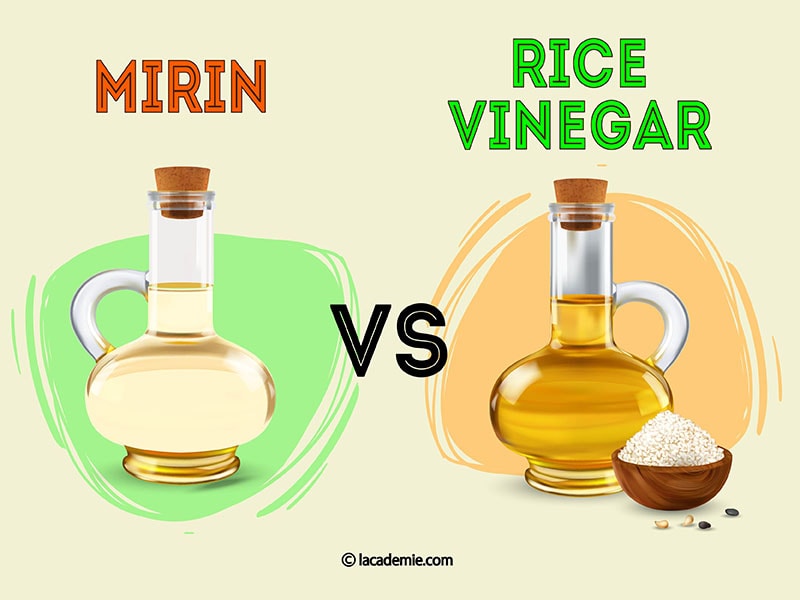
Mirin Vs. Rice Vinegar – An Quick Look On The Differences
Mirin and rice vinegar both are fermented condiments that are rooted in rice. Furthermore, they both are used for adding more flavor to dishes.
They might appear similar at a glance, but the flavors themselves have set them apart from each other. While mirin is more emphasized in sweetness, the sourness makes rice vinegar distinctive.
For a clearer understanding, first, I will respectively give mirin and rice vinegar information. And a summary of the similarities and differences between these two will come up later.
Nutritional Comparison Between Mirin And Rice Vinegar
Nutritionally, you probably don’t need to worry because both mirin and rice vinegar are very low in calories. Moreover, their sodium content is not too high.
But it’s hard to say exactly how much nutrition they have as this depends on the brand you use. Below, I will provide a nutritional comparison between Eden Mirin Rice Cooking Wine and Roland Seasoned Rice Wine Vinegar.
Note: These ratios can be changed according to the brands’ adjustments.
Mirin – Japanese Natural Source Of Sweetness

For a good start, let’s talk about mirin first. This mysterious condiment has nothing to hide through my post!
1. What Is Mirin? (Definition, Origin, Types)
Mirin is a rice wine that is popularly used in many authentic Japanese dishes. It’s considered one of the most basic condiments in this beautiful country. So if you have ever tried Japanese food, chances are that you’ve tasted this sweet rice wine before without knowing it.
This rice wine appeared first in Japan’s Edo Age. At this time, mirin was a produce-to-drink wine as it has a low percentage of alcohol and a sweet flavor.
In addition, mirin has been considered a luxury item that can only be served in noble families. It was not until the 17th century that Mirin was used as a sugar replacement.
Naturally, mirin is considered as a kind of rice wine. However, the alcohol content in mirin is much lower than the other Japanese wine, and the sugar content is much higher too. But you may be surprised that there is no sugar added into mirin. (1)
Mirin’s sweet flavor naturally stems from the fermentation process. And since Japanese people tend to favor natural flavors, mirin was preferred in Japanese recipes over the regular sugar or monosodium glutamate (MSG).
2. Types Of Mirin – Choose The Right One
There are three types of mirin:
Hon mirin: Hon mirin is also known as “true mirin.” This type of mirin has an alcohol content of 14%. The production of this mirin takes 40-60 days to be produced after the saccharification. Currently, this is also the most expensive type of mirin.
Shio mirin: Also known as salt mirin. As its name suggests, this mirin contains 1.5% salt and can be brewed in less than 40 days. Mirin manufacturers add salt to shio mirin in order to avoid alcohol taxes. In addition, it is more commonly used in cooking than the other two.
Shin mirin, or “new mirin”: This mirin has less than 1% alcohol content, which is the lowest in three types of mirin. However, it has the same sweetness as hon mirin. It is also cheaper, which results in lower quality.
3. Mirin – Culinary Applications
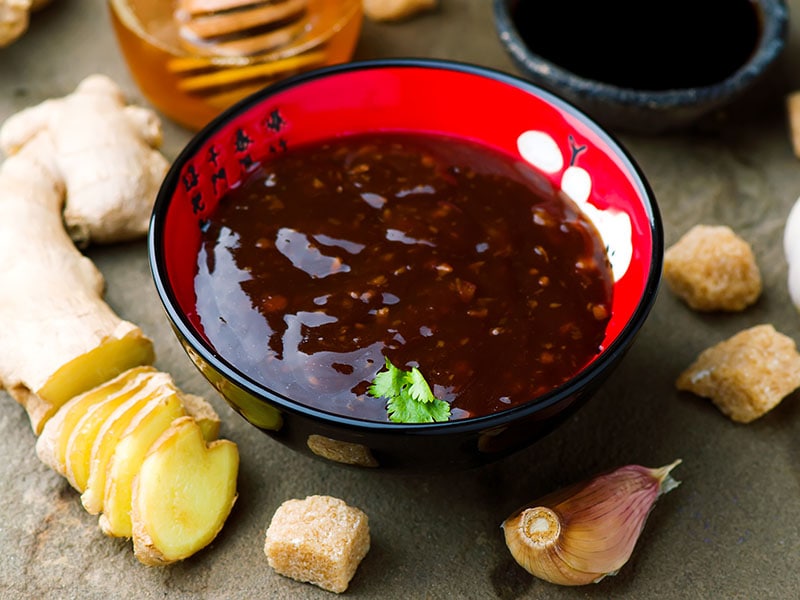
Along with soy sauce, miso, sake, and dashi, mirin is one of Japan’s most essential cooking condiments. Mirin is what turns average recipes into delectable and inviting dishes. .
Depending on different regions and eating habits, mirin is used differently. But no matter how it is used, the main purpose is to create sweetness without adding more sugar to the dishes.Responsible for the umami flavor, mirin is deeply cemented with Japanese cuisine.
One thing you may not know: you can easily find a bottle of mirin in small supermarkets in Japan, but you might not see MSG in the spice section. Although known as the MSG’s homeland, the Japanese use mirin for seasoning instead.
However, don’t make the mistake of thinking that mirin is an alternative ingredient to replace MSG. Although mirin does have that signature umami flavor commonly seen in MSG, mirin has a pronounced sweetness and alcohol content, making it an entirely different thing from MSG.
So, what is mirin actually used for? Below, I will reveal four typical uses of this alcoholic condiment!
Condiment For An Enticing Natural Sweetness
As mentioned above, the Japanese tend to prefer natural flavors, so mirin is popularly used as a sugar substitute when seasoning. Its gentle sweetness can well-balance the salty flavor in the dishes.
Seasoning For Broths And Soups
Mirin also is a part of soups and Japanese noodles’ broths. They strengthen the original ingredients, give off a richer flavor profile that can make your mouth water.
Still suspicious? Well, go to an authentic Japanese restaurant, order a bowl of ramen. It will be one of your best experiences!
Watch this video to know more:
Marinating Meat, Fish, And Other Seafood
Mirin is well-done in meats and seafood marination. It plays a significant role in promoting the penetration of spices into the ingredients. Furthermore, mirin also helps to make the seafood less smelly, creating a glossy and shiny look.
Teriyaki And Other Sauces’ Main Ingredient
If you’re a fan of sushi and Japanese grills, you’re likely to have known that Japan is where the top-tier teriyaki sauce is produced. This famous Japanese sauce is made from 3 main ingredients, including mirin.
Not only that, mirin is a keynote in making the sauce of “Japanese dumpling” – Gyoza, a famous appetizer in Japanese cuisine. If you ever decide to try out Japanese food or visit this country, don’t forget to try out these mouthwatering dumplings.
If you want to know how mirin is used to make teriyaki, this video belongs to you!
Rice Vinegar – A Treasure Of Asian Cuisine
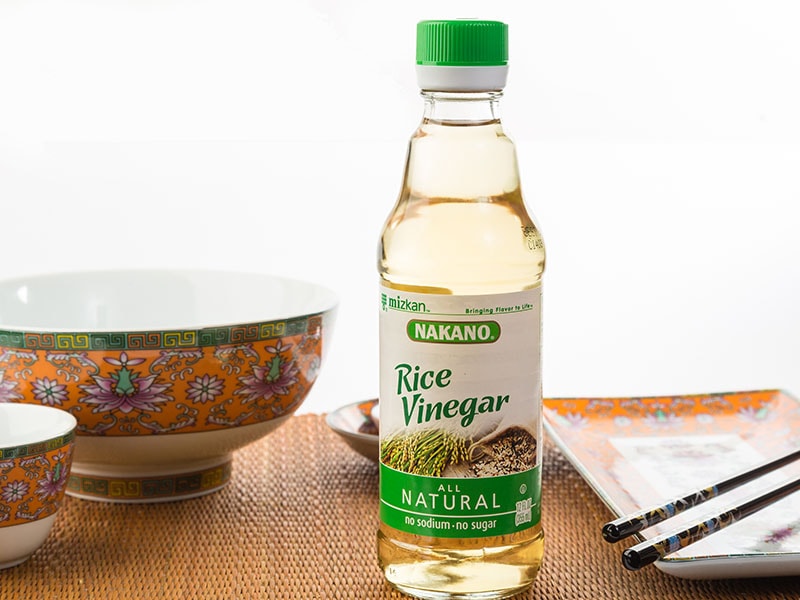
Now, it’s time to discover the second object of today’s topic. I’m sure the information below will give you more insights into rice vinegar!
1. What Is Rice Vinegar?
Rice vinegar, like mirin, is a condiment fermented from rice starches. This condiment is created through the fermentation process in which mycoderma aceti – a kind of bacteria that can be added into rice wine for the purpose of producing vinegar. (2)
This bacteria first converts sugar into alcohol, then transforms alcohol into acetic acid. However, there is not too much acid in this spice. Hence, due to the lower acidity content, the flavor of rice vinegar is much milder than other kinds of vinegar.
In the culinary world, rice vinegar is mostly used in Asian countries, notably in Japan, Chinese, Vietnam, and Korea.
However, it is now making many world professional chefs’ kitchens its home as well. Thanks to its subtle sweet and slightly sour flavor, rice vinegar is not only limited in Asian cuisine now.
2. Rice Vinegar Diverses In Types
Rice vinegar is a little member of the vinegar family. Of course, it also has other relatives.
Depending on regions and countries, rice vinegar is divided into many different types, made of different types of rice. Here are some countries where rice vinegar is used popularly.
China
In China, rice vinegar is divided into three distinct types:
White Rice Vinegar: This is the most acidic one in three types of rice vinegar. However, the acidity content is still less than Western vinegar.
Red Rice Vinegar: By its name, this vinegar has a characteristic light red color. It has a completely different flavor than the other two types.
Black Rice Vinegar: Black rice vinegar has the sweetest taste compared to white rice vinegar and red rice vinegar. But it is not regularly used due to its almost smoky flavor.
Japan
Separated from China, Japanese rice vinegar is divided into many types. However, the two most popular types of rice vinegar in Japan consists of:
Japanese Rice Vinegar: This vinegar is very mild and mellow, ranging in color from white to pale yellow. It is mainly used to remove the smelly scent of fish and seafood.
Seasoned Rice Vinegar: Made by adding sake, sugar, and salt, seasoned rice vinegar is mainly used to add flavor to rice.
Vietnam
In Vietnamese cuisine, the most common type of rice vinegar (“giấm gạo“) has the main ingredient taken from a Vietnamese famous round-grain sticky rice, called “nếp cái hoa vàng.” In addition, some other different types of vinegar are treated differently based on each region’s eating habits.
Korea
In Korea, rice vinegar is called ssal-sikcho, mainly made from white or brown rice combined with nuruk (a fermentation starter).
3. Rice Vinegar Uses In Culinary World
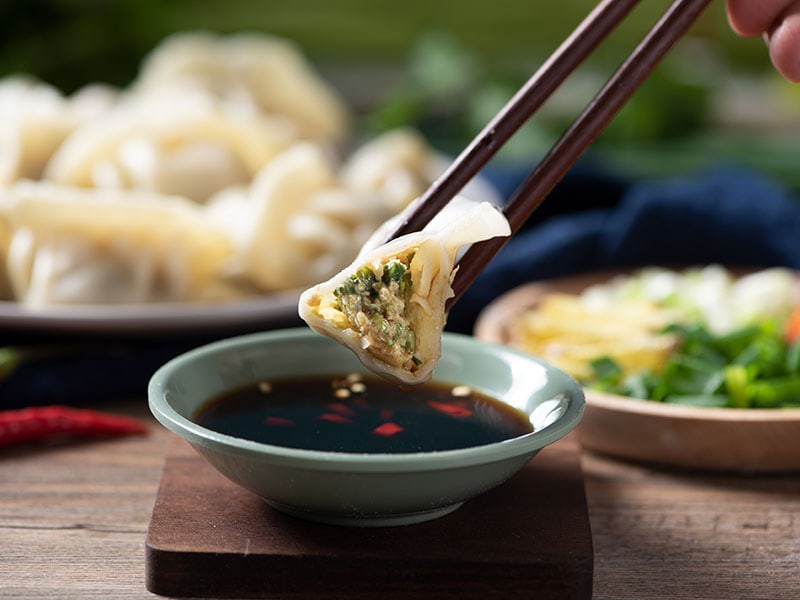
If mirin only has a medium rate of sourness, rice vinegar is much more than that. Sourness is the dominant flavor in rice vinegar. By the same token, rice vinegar tends to be used to add a light sour taste to the dish.
Although rice vinegar also has a sweet taste, it is insignificant compared to mirin. If mirin is something you can drink, rice vinegar should not stand by itself. Instead, it needs to be mixed with other condiments to create a savory flavor for the food.
As much as rice vinegar differs from mirin, when you’re in a pinch, it’s acceptable to use rice wine as a replacement for mirin. However, you can only do so in some instances, such as when you need a mirin substitute for dressing salads, serving sushi, or making pickled vegetables.
When it comes to variety, rice vinegar seems to be much more diverse than mirin. However, it also ends up with common treats.
Here are the most popular uses of rice vinegar:
Seasoning Sushi Rice
Sushi rice is not simple steamed rice. It is seasoned with other spices such as salt and sugar, vegetable oil, and of course, rice vinegar. This condiment contributes to the light sour of sushi rice, enhances the fresh taste of fish and seafood, and evokes your appetite.
You should see the video below:
Dumpling Dipping Sauce And Other Sauces
Rice vinegar, soy sauce, and sesame oil are three primary ingredients for Chinese dumpling dipping sauce. Without rice vinegar, this sauce cannot be completed. It will lose the hints of sourness and sweetness, which make dumplings highly appreciated.
On the other hand, in Vietnam, rice vinegar is also present in this country’s famous fish sauce. If you have ever tried Vietnamese spring rolls or egg rolls with fish sauce, you will definitely understand how a masterpiece is born.
Salad Dressings
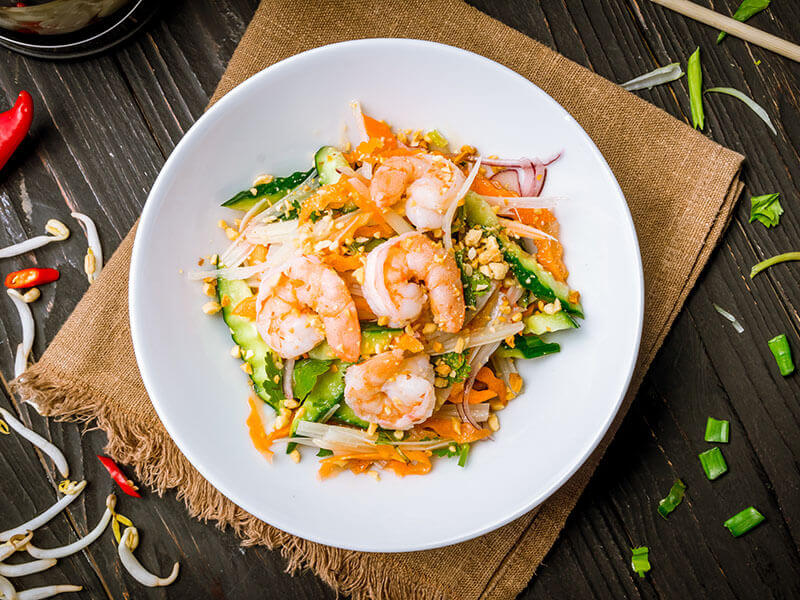
Excluding lime, rice vinegar is the best pick for vegetable salad dressing. Not only is it welcomed in the eastern culinary world, but also in Western cuisine. Rice vinegar can be replaced to create the sourness for your run-out apple cider vinegar, for example.
Making Pickles
This flavorful side dish has been no stranger in the world. From Asia, Europe, America to Africa, pickles are an indispensable historic-cemented food.
And rice vinegar is a key ingredient to make almost all kinds of pickles. It’s the “conductor,” “who” directs the whole orchestra, creating a beautiful symphony with the name of pickles.
Removing Fish And Meat’ Smelly Odor
Rice vinegar, like mirin, usually is used to ease the smelly odor of both fish and meat. For example, along with ginger, rice vinegar is used by Vietnamese to remove the strong smell of duck meat.
Health Benefits of Mirin & Rice Vinegar
If you wonder about the benefits that mirin and rice vinegar can bring to your health, let’s scroll down immediately to get the answers!
1. Mirin
Health benefits of mirin are almost not mentioned in the culinary world. It is only considered as a cooking condiment instead of a health-benefiting source.
However, when using mirin, there will be no calories added to your foods.
2. Rice Vinegar
Due to its earlier birth and long history, many pieces of research have been conducted to figure out the benefit of rice vinegar to human health.
A Package Of Antioxidants
Rice vinegar contains a significant amount of antioxidants. The darker the rice vinegar color, the more antioxidants it has. (3)
Good For Your Immune System
All kinds of vinegar, including rice vinegar, have the amino acids essential, which can strengthen human immune function and protect the body from free radical damage. (4)
Reducing Cholesterol Level
Acetic acid from vinegar will help you to reduce the cholesterol level in your blood, which helps to reduce the risk of heart disease.
Mirin & Vinegar – An Overview Comparison
You must have known all of the information about mirin and rice vinegar in the sections above. And I’m sure you are looking for detailed comparisons. I will not let you wait any longer!
1. Mirin & Rice Vinegar Do Have Some Similarities
Before telling you the differences, I will give you a more specific explanation of the similarities. I really do hope that this part can benefit you.
Both Are Used As Condiments
The clearest similarity you can see between mirin and rice vinegar is their uses. Both of these products are used as a spice to add more flavor to the dishes.
They are must-have ingredients in thousands of recipes around the world. Specifically, mirin and rice vinegar both contribute to perfectly completing sauces as well as helping to eliminate the smelly scents of meat and fish.
Despite proportion differences, their sour and sweet flavors make the dish brightening as it should be.
They Have The Same Origin
If you read all the information I have provided, you probably already know that mirin and rice vinegar are commonly used in Asian cuisine. Not only that, but they are also inherently rooted in Eastern civilization.
Mirin belongs to Japan – one in two countries with the most Michelin-starred restaurants in the world. And what about rice vinegar?
Of course, this spice originated from Asia too. The vinegar naturally is an Asia-born product, being found to appear first in Babylon, Iraq nowadays.
2. What Makes Mirin & Rice Vinegar Different From Each Other?
In this part, I will tell you in detail all of the differences between mirin and rice vinegar. This may help you have a clearer overview for better usage.
Acidity – Which One Is Higher?
When it comes to acidity, rice vinegar will obviously be much more acidic than mirin because it is fermented from both rice and wine.
How Distinct Are Mirin & Rice Vinegar In Flavor?
Both mirin and rice vinegar taste quite similar. You can find both sour and sweet flavors in 1 tablespoon of mirin and 1 tablespoon of rice vinegar. However, there is a clear dissimilarity in the proportions of these flavors:
Sweetness: Compared to rice vinegar, mirin has a much higher sweetness content than rice vinegar. This spice is also used as a substitute for the sweetness of sugar in Japanese recipes. They were even considered a drink in ancient Japan.
Sourness: While mirin emphasizes sweetness, rice vinegar is the winner of sour flavor. It is also used mainly to create a light and pleasant taste in salads and pickles.
What’s About Their Alcohol Content?
Surprisingly, while rice vinegar is more acidic, they contain a very low level of alcohol (<1%) and are mostly alcohol-free. Moreover, when heated at a high temperature, the alcohol content will also evaporate.
In contrast to rice vinegar, mirin contains 1-20% alcohol, depending on the type of mirin. This explains why mirin is also used both as a spice and as a drink.
Texture – Do Mirin & Rice Vinegar Have The Same Texture?
Mirin has a light syrupy texture, so this condiment is thicker than rice vinegar, which is created in the form of watery consistency.
Are Mirin & Rice Vinegar Gluten-Free?
Since mirin is a kind of wine fermented from rice, no gluten is produced during the production process.
However, it is completely wrong when it comes to rice vinegar. Each brand of rice vinegar will have different ingredient tables. Some brands will add a wheat mixture to their ingredients table, leading to the presence of gluten in rice vinegar.
The Differences In Uses You Need To Know
In cooking, mirin is mainly used to season in sweet sauces such as teriyaki, meat and fish, soups and broths.
Rice vinegar is the main ingredient to create sourness, so it is commonly used in sauces such as dumpling dipping sauce and fish sauce. They are also used to make pickles, which cannot be done with mirin.
Popularity – Are Mirin & Rice Vinegar Well-Known Worldwide?
Regarding the popularity, rice vinegar definitely takes the crown! While mirin is only popular in Japan (and maybe Korea), rice vinegar is a favorite condiment in many countries from the east to the west!
Fun Facts You Might Not Know About Mirin & Rice Vinegar
- November 30th every year is Hon Mirin Day in Japan.
- Rice vinegar is also used as a natural toner by women.
- Sometimes, the Japanese call mirin by rice wine.
- Rice wine is used for weight loss by the Japanese.
- In France, vinegar literally means “sour wine.”
FAQs
If you have any further questions relating to mirin and rice vinegar, this frequently asked question section can be helpful. Check out right now to solve your problem!
Have You Got Your Trouble Solved?
Congratulations! I’m glad that you have reached this far! This is a long journey for getting knowledge of the two Asian condiments. I really hope this article has given all the necessary information that you’re finding.
My explanation may be a little bit long, but I’m sure you have gained some useful tricks on using mirin and rice vinegar for your recipes as well. Keep in mind that though these two spices have the same rice-rooted profile, they are distinctive in flavor.
While mirin is more about providing sweetness, rice vinegar focuses on adding sourness to your dishes. Therefore, you should be careful in using these two spices in your recipes. Without notice, you can turn your dish into a disaster in just a second.
Now, if you found my post helpful, please share it with the people who need it. And don’t forget to leave your comments in the comments section below! I’m looking forward to hearing from you!
References
- Mirin – Wikipedia. En.wikipedia.org. 2021.
- Rice vinegar – Wikipedia. En.wikipedia.org. 2021.
- Gao, H., Wang, W., Xu, D., Wang, P., Zhao, Y., Mazza, G., & Zhang, X. (2021). Taste-active indicators and their correlation with antioxidant ability during the Monascus rice vinegar solid-state fermentation process. Journal of Food Composition and Analysis, 104133.
- Li, P., Yin, Y. L., Li, D., Kim, S. W., & Wu, G. (2007). Amino acids and immune function. British Journal of Nutrition, 98(2), 237-252.1
